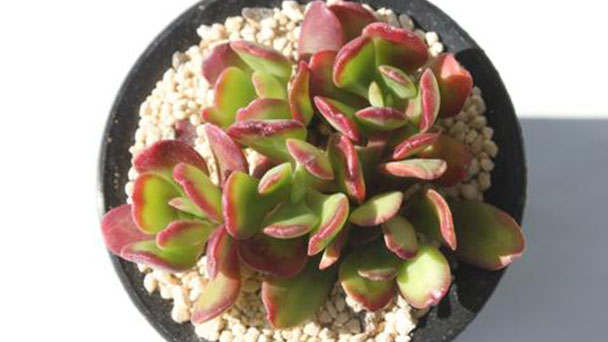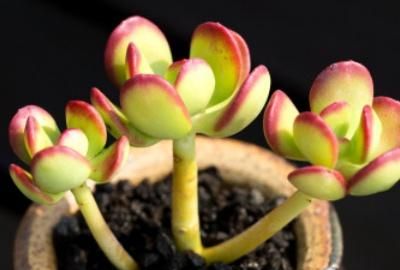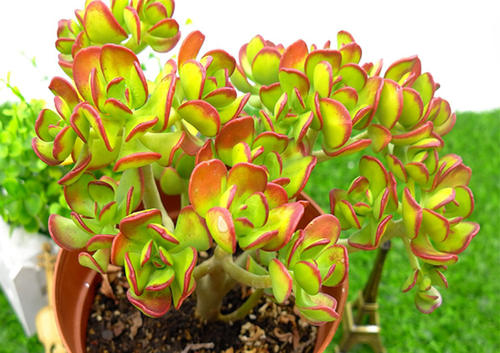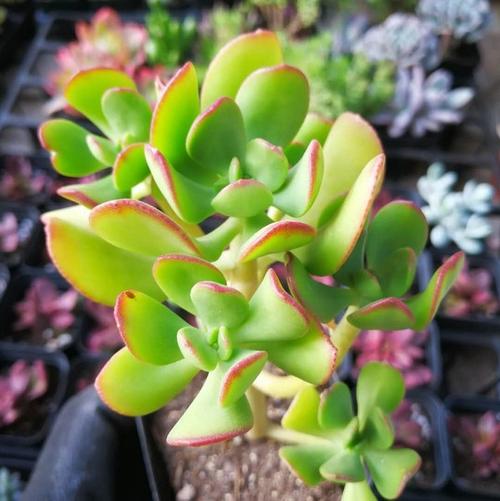Sedum Dendroideum Profile
Written by Maggie
Nov 01 2021

Sedum Dendroideum is a succulent plant of the genus Sedum. Sedum Dendroideum has waxy green leaves with red margins. Flowers have previously described the long-staked Sedum Dendroideum as looking like a scepter.
Sedum Dendroideum Picture

Sedum Dendroideum Characteristics
Sedum Dendroideum has three vegetative organs: root, stem and leaf, and three reproductive organs: flower, fruit and seed. As a result of long-term adaptation to an arid environment, the vegetative organs of cactus and succulents have changed a lot. Leaves of sedum dendroideum have disappeared in most cactus plants, and are often only trace or premature in Euphorbiaceae succulents. Sedum Dendroideum is still found in most other families of succulents, but with varying degrees of succulency. The stem in cactus has not only replaced the leaf as the main organ of photosynthesis but also has a high ornamental value because of its great variety. But many other families of succulent plants have stems that are absent or have very short stems. In addition, Sedum Dendroideum also has a unique organ spine. (Therefore, after describing the three conventional forms of succulents, cacti will be described separately for ease of description.) Succulents can be divided into three types: leaf succulents, stem succulents and stem succulents according to the different parts of the water storage tissue in the plant.
The water storage tissue is mainly in the leaf. Stem of Sedum Dendroideum is generally not fleshy, part of the stem slightly lignified. The fleshy degree of leaves differed according to the drought degree of habitats. Sedum Dendroideum is native to less arid areas that have larger and thinner leaves. aptenia cordifolia, for example, is native to Natal, a wetter region than the rest of South Africa. Therefore, its morphology is a trailing plant shape, with larger and thinner leaves, and the morphology is not very different from the common grass flowers. As conditions become drier, stems become shorter and leaves thicker. Any of several species of the family Plycophoraceae found in extremely arid regions having a plant consisting of only one or two pairs of leaves, with the stems all gone and the leaves highly fleshy.

How to Grow and Care for Sedum Dendroideum
Sedum Dendroideum requires full sunlight and a cool, dry environment that can withstand semi-shade, avoid flooding, and avoid hot and humid conditions. Sedum Dendroideum has the habit of growing in the cold season and dormant in high temperatures in summer. If the light is not enough, the Sedum Dendroideum leaves will grow empty. However, the plants growing in the sunny place will be short and strong, and the leaves will be arranged tightly.
Keep the soil moist during the growing season to avoid standing water. The soil can be mixed with peat and a small amount of perlite with coal cinders, and the ratio is about 6:3:1. Sedum Dendroideum can withstand a low temperature of about minus 4℃, which is indoor temperature, but not open air. If the temperature is lower, the top growth point of the leaves will suffer frostbite, dry and die. The whole Sedum Dendroideum grows slowly or completely stops when summer high temperature, this time should be well ventilated and appropriate shading, avoid insolation, temperate watering, cannot long-term rain, so as to avoid plant decay.
Sedum Dendroideum Succulent Propagation
Sedum Dendroideum propagation is commonly beheading blasting cutting blade or baby, cut down the plant can be directly cuttings in dry granular soil, a small amount of water in a few days, it is easy to the hair root, leaf cuttings is a bit slow oh, remove the complete full blade, in the shade to dry the wound, and then placed in the soil, soil not too wet, a little moisture, it will slowly sprout to grow new plants.

Latest Updated
- Benefits of Bugleweed - 7 Science-backed Health Benefits
- Bugleweed Dangers & Side Effects - Is It Poisonous?
- How to Plant Evergreen Trees - What You Should Know
- When to Plant Evergreens - Grow Guide for Evergreen Trees
- 12 Wonderful Evergreen Shrubs for Your Garden
- 12 Popular Evergreen Plants with Pictures for Beginners
- When And How To Prune A Lilac Bush Like a Pro
- How to Grow & Care for Lilac Vine (Hardenbergia Violacea)
- Japanese Lilac Tree (Syringa Reticulata) Care & Propagation Guide
- Shumard Oak Pros and Cons - What to Know
Popular Articles
- Winter maintenance of Antirrhinum Majus
- How to Grow Terminalia Mantaly Tree
- How to Grow and Care for Crossostephium Chinense
- How to grow Antirrhinum Majus in spring
- Peristeria Elata (Dove Orchid) Profile: Info & Care Guide
- Underwatered Snake Plant (Sansevieria Trifasciata) - Signs And How To Fix
- How to Care for Brazilian Jasmine Plant (Mandevilla Sanderi)
- How to Grow & Care for Graptopetalum Purple Delight in Summer
- Rosa Chinensis (China Rose): Plant Growing & Care Tips
- How to Care for Baby Sun Rose (Aptenia Cordifolia)